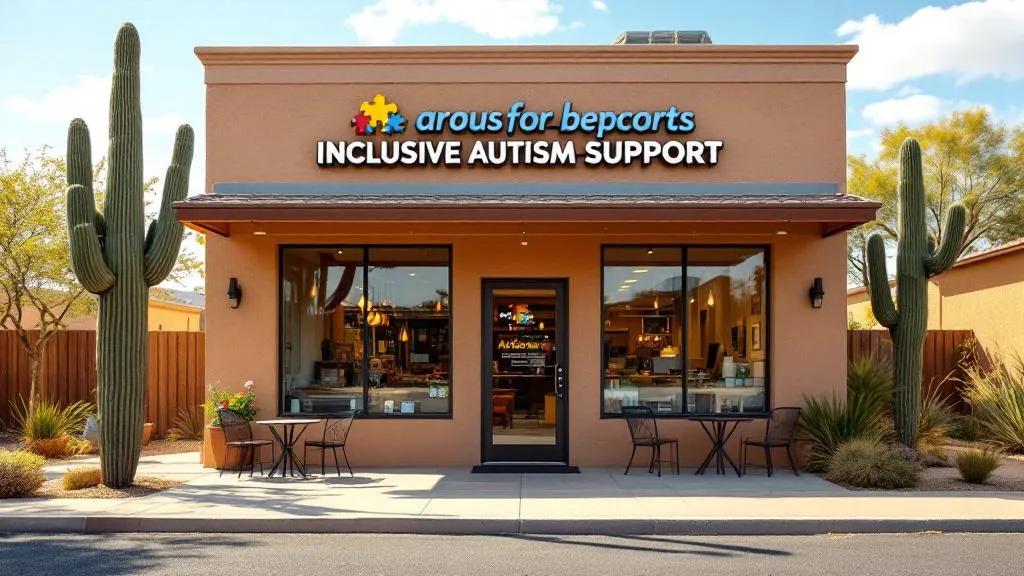Exploring Messi's Autism Allegations
Untangling the truth: Does Messi have autism? Explore the causes, signs, and living with autism.

Understanding Autism
Autism is a complex neurodevelopmental disorder that affects individuals in various ways. To better comprehend the topic, let's explore the definition of autism and its common characteristics.
Definition of Autism
According to the Diagnostic and Statistical Manual of Mental Disorders (DSM-5) published by the American Psychiatric Association, autism is characterized by persistent impairments in social communication and social interaction across multiple contexts. Individuals with autism often exhibit restricted and repetitive patterns of behavior, interests, or activities.
It's important to note that autism is a spectrum disorder, meaning that it manifests differently in each individual. The severity of symptoms can range from mild to severe, and the level of support required varies accordingly. Autism is not a disease or a condition that can be "cured," but rather a lifelong condition that individuals learn to navigate and manage.

Common Characteristics
Autism is associated with a wide range of characteristics that commonly occur in individuals on the autism spectrum. These characteristics can include:
- Challenges in social interaction: Individuals with autism may struggle with understanding and responding to social cues and norms. They may have difficulty initiating and maintaining conversations, understanding nonverbal communication, and forming relationships.
- Communication difficulties: Many individuals with autism experience challenges in expressive and receptive communication. They may have delays in language development, use repetitive or echolalic speech, or have difficulty understanding abstract language and figurative expressions.
- Restricted and repetitive behaviors: People with autism often engage in repetitive behaviors or have highly specific interests. They may adhere to strict routines and experience distress when routines are disrupted. Sensory sensitivities, such as being over- or under-sensitive to certain sounds, textures, or lights, are also common.
It's important to emphasize that while these characteristics are commonly associated with autism, each individual's experience may vary. Some individuals may excel in certain areas, such as pattern recognition or attention to detail, while facing challenges in others.
To learn more about autism and its impact on individuals, you can explore our article on famous people with autism.
Causes of Autism
When examining the causes of autism, it's important to consider both genetic factors and environmental influences. These factors play a significant role in the development of autism spectrum disorder (ASD).
Genetic Factors
Research suggests a strong genetic component in the development of autism. Studies conducted on twins have shown that ASD has a high heritability rate, meaning that genetics contribute significantly to the likelihood of developing autism. A study published in the Archives of General Psychiatry found that genetic heritability accounts for approximately 38% of the risk of developing ASD. Another study published in JAMA estimated that up to 83% of the risk for developing ASD is attributed to genetic factors.
Although the specific genes involved in autism are still being investigated, it is believed that a combination of various genetic variations and mutations may contribute to the development of the disorder. It's important to note that having a genetic predisposition to autism does not guarantee that an individual will develop the condition.
Environmental Influences
In addition to genetic factors, environmental influences also play a role in the development of autism. Researchers have explored various environmental factors that could contribute to the risk of ASD, although the exact mechanisms are not yet fully understood.
Studies have shown that certain environmental factors, including prenatal and early-life exposures, may increase the risk of autism. These factors can range from maternal infections and complications during pregnancy to exposure to certain toxins and chemicals. However, it's important to note that these factors alone do not cause autism. They may interact with genetic vulnerabilities to increase the risk.
Research into the environmental influences on autism is ongoing, and it is a complex area with many potential factors involved. A systematic review published in Translational Psychiatry highlighted the association between environmental toxicants and autism spectrum disorders [^2^]. Another review published in the Annual Review of Public Health discussed the changing epidemiology of autism spectrum disorders and the potential role of environmental factors [^1^].
Understanding the interplay between genetic factors and environmental influences is crucial in unraveling the complex causes of autism. It's important to remember that autism is a spectrum disorder, and the causes may vary from person to person. If you're interested in learning about other famous individuals with autism, check out our article on famous people with autism.
Signs and Symptoms
When it comes to autism, understanding the signs and symptoms is essential for early identification and intervention. Autism is a complex neurodevelopmental disorder that affects individuals in various ways. In this section, we will explore the early signs of autism and common behavioral patterns associated with the condition.
Early Signs of Autism
Identifying autism in its early stages can be challenging, as symptoms may vary widely among individuals. However, research has provided insights into common early signs that may indicate the presence of autism spectrum disorder (ASD) [1]. It is important to note that these signs are not definitive proof of autism but can serve as red flags for further evaluation. Some early signs of autism include:
- Delayed or atypical communication skills: Children with autism may have difficulty developing language skills or show unusual speech patterns. They may have limited vocabulary, struggle with back-and-forth conversation, or exhibit echolalia (repeating words or phrases without context).
- Social interaction difficulties: Children with autism might struggle with social interactions and exhibit challenges in engaging with others. They may have difficulty making eye contact, demonstrating limited interest in sharing experiences, or showing reduced response to social cues.
- Repetitive behaviors and interests: Many children with autism engage in repetitive behaviors or have intense interests in specific topics. These behaviors can include repetitive movements (e.g., hand-flapping, rocking), insistence on sameness, or fixations on specific objects or subjects.
- Sensory sensitivities: Sensory sensitivities are common in individuals with autism. They may be hypersensitive or hyposensitive to sensory stimuli, such as sounds, lights, textures, or tastes. These sensitivities can lead to distress or avoidance of certain sensory experiences.
Behavioral Patterns
In addition to the early signs mentioned above, individuals with autism often display certain behavioral patterns that are characteristic of the condition. These patterns can vary in severity and intensity [2]. Some common behavioral patterns associated with autism include:
- Repetitive movements or behaviors: This can include repetitive body movements (e.g., hand-flapping, spinning), insistence on routines or rituals, and a strong need for sameness. These repetitive behaviors can serve as self-regulation mechanisms for individuals with autism.
- Restricted and intense interests: Individuals with autism may display intense interests in specific topics or objects. They may spend extensive amounts of time learning about and engaging with these interests, often to the exclusion of other activities or topics.
- Challenges with transitions and changes: Individuals with autism often struggle with transitions and changes in their routine. They may become anxious or exhibit resistance when faced with unfamiliar situations or disruptions in their established patterns.
- Difficulties with social communication: Social communication challenges are a hallmark of autism. Individuals may have difficulty understanding nonverbal cues, such as facial expressions or body language. They may also struggle with the nuances of conversation, such as turn-taking or understanding sarcasm.
It is important to note that each individual with autism is unique, and the combination and severity of these signs and behaviors can vary. If you suspect that you or someone you know may have autism, it is crucial to seek a professional evaluation for an accurate diagnosis. Early identification and intervention can significantly impact the long-term outcomes and quality of life for individuals with autism.
Diagnosis and Evaluation
When it comes to diagnosing autism, a comprehensive evaluation is necessary. This typically involves two key components: screening for autism and the diagnostic process.
Screening for Autism
Screening for autism involves the use of standardized tools to identify individuals who may be at risk of having autism spectrum disorder (ASD). These tools are designed to assess various aspects of behavior and development that are typically associated with autism. They help healthcare professionals determine if further evaluation is needed.
One commonly used screening tool is the Autism Diagnostic Observation Schedule, Second Edition (ADOS-2). This assessment involves direct observation of the individual's behavior and interactions. It provides valuable information about their social communication skills, repetitive behaviors, and restricted interests.
Other screening tools, such as the Modified Checklist for Autism in Toddlers (M-CHAT) and the Social Communication Questionnaire (SCQ), may also be utilized to gather additional information about the individual's development and behavior.
Diagnostic Process
The diagnostic process involves a comprehensive evaluation conducted by healthcare professionals, such as psychologists, psychiatrists, or developmental pediatricians. It aims to determine whether an individual meets the criteria for autism spectrum disorder as outlined in the Diagnostic and Statistical Manual of Mental Disorders, Fifth Edition (DSM-5) [^2^].
During the evaluation, the healthcare professional will gather information from various sources, including clinical observations, interviews with the individual and their caregivers, and assessments of their developmental history. The evaluation may also involve additional assessments, such as cognitive testing, to gain a comprehensive understanding of the individual's strengths and challenges.
It is important to note that the diagnostic process can be complex and may require multiple appointments. The healthcare professional will carefully analyze the collected information and compare it to the diagnostic criteria outlined in the DSM-5. If the individual meets the criteria for autism spectrum disorder, a formal diagnosis will be made.
It is crucial to consult with a qualified healthcare professional for an accurate diagnosis. Early identification and diagnosis are important for accessing appropriate interventions and support for individuals with autism. If you have concerns about yourself or someone you know, it is advisable to seek professional guidance.
For more information on famous individuals with autism, including athletes, actors, and musicians, check out our article on famous people with autism.
Treatment and Therapies
When it comes to the treatment of autism, a multidisciplinary approach is often recommended. The goal is to address the unique needs and challenges of individuals with autism spectrum disorder (ASD) and help improve their quality of life. Two primary approaches commonly used in the treatment of autism are behavioral therapies and medications.
Behavioral Therapies
Behavioral therapies play a crucial role in the treatment of individuals with autism. These therapies are designed to address specific behaviors and help individuals develop essential skills for communication, social interaction, and daily living. Applied Behavior Analysis (ABA) is one of the most widely recognized and evidence-based behavioral therapies for individuals with autism.
ABA focuses on breaking down complex behaviors into smaller, manageable components. It utilizes positive reinforcement to encourage desired behaviors and reduce challenging behaviors. Through structured sessions and interventions, individuals with autism can learn new skills and improve their adaptive behaviors. ABA therapy is tailored to meet the unique needs of each individual, and the intensity and duration of therapy may vary.
Other behavioral therapies that may be utilized include:
- Cognitive Behavioral Therapy (CBT): CBT helps individuals with autism understand and manage their thoughts, emotions, and behaviors. It can be beneficial in addressing anxiety, obsessive-compulsive behaviors, and social skills deficits.
- Social Skills Training: This therapy focuses on teaching individuals with autism appropriate social skills, such as initiating conversations, maintaining eye contact, and interpreting social cues.
- Speech and Language Therapy: Speech and language therapy aims to improve communication skills, including speech production, understanding and using language, and nonverbal communication
Read about: Effective ABA Therapy Techniques for Autism
Medications for Autism
While there is no medication that can cure autism, certain medications may be prescribed to manage specific symptoms associated with the disorder. Medications are typically used to target co-occurring conditions or challenging behaviors that may interfere with daily functioning.
Common medications prescribed for individuals with autism include:
- Selective Serotonin Reuptake Inhibitors (SSRIs): SSRIs are commonly used to address anxiety, obsessive-compulsive behaviors, and depression that may co-occur with autism. They work by increasing the levels of serotonin in the brain, which can help regulate mood and reduce anxiety.
- Atypical Antipsychotics: These medications are sometimes prescribed to manage behaviors such as aggression, self-injury, and irritability. Atypical antipsychotics help regulate dopamine and serotonin levels in the brain, which can help reduce these challenging behaviors
Read about: Understanding Autism and Medication Management
It's important to note that medication should always be prescribed and monitored by a qualified healthcare professional experienced in treating individuals with autism. The decision to use medication should be based on a thorough evaluation of the individual's symptoms and needs, along with a consideration of potential risks and benefits.
In addition to behavioral therapies and medications, other interventions such as occupational therapy, sensory integration therapy, and speech and language therapy may also be incorporated into the treatment plan for individuals with autism. The specific combination of therapies and interventions will depend on the individual's unique needs and goals.
For more information on autism and famous individuals who may have autism, you can explore our articles on famous people with autism, Jacob Barnett, Anthony Hopkins, and Jerry Seinfeld. Remember, early intervention and a personalized treatment plan can make a significant difference in the lives of individuals with autism.
Living with Autism
Living with autism can present unique challenges and opportunities. It is important for individuals with autism to have a strong support system in place and access to appropriate education and employment opportunities. In this section, we will explore support systems and resources available for individuals with autism, as well as the educational and employment options that can help them thrive.
Support Systems
Having a strong support system is crucial for individuals with autism. It provides a network of understanding and assistance for both the person with autism and their family. There are various organizations and resources available that offer support and guidance. Here are a few examples:
- National Autistic Society: This organization provides support for families affected by autism. They offer information, advice, and practical support through various services and resources.
- Autism Speaks: Autism Speaks offers a comprehensive Family Services Resource Guide that includes information on support services, therapies, and programs available for individuals with autism and their families.
- Centers for Disease Control and Prevention: The CDC provides information on community support for individuals with autism, including support groups, community programs, and resources for parents and caregivers.
These support systems can provide valuable assistance and connect individuals with autism to a community of understanding and resources.
Education and Employment Opportunities
Education plays a crucial role in the lives of individuals with autism. It is important to provide tailored educational opportunities that cater to their unique needs and strengths. Here are some resources for education:
- Autism Society: The Autism Society offers information and resources on education for individuals with autism. They provide guidance on inclusive education, individualized education programs (IEPs), and other educational support services.
- Job Accommodation Network: The Job Accommodation Network offers information on accommodations and compliance for employees with autism spectrum disorder. They provide guidance on workplace adjustments and support for individuals with autism in employment settings.
- National Autism Association: The National Autism Association offers resources and information on employment opportunities for individuals with autism. They provide guidance on job searching, workplace accommodations, and supportive programs.
By providing appropriate education and employment opportunities, individuals with autism can develop their skills and talents, leading to a more fulfilling and independent life.
Living with autism can present unique challenges, but with the right support systems and access to education and employment opportunities, individuals with autism can thrive and reach their full potential. It is important to recognize the strengths and abilities of individuals with autism and create an inclusive society that embraces and supports their needs.
References
Does Your Child Have An Autism Diagnosis?
Learn More About How ABA Therapy Can Help
Find More Articles
Contact us
North Carolina, Nevada, Utah, Virginia
New Hampshire, Maine
Arizona, Colorado, Georgia, New Mexico, Oklahoma, Texas
.avif)


































































































